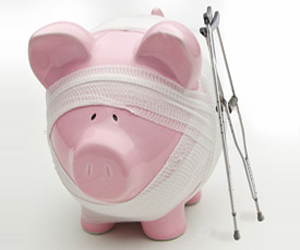Send this article to a friend:
October
08
2022
Send this article to a friend: October |
American Families Drowning in Debt Cannot Survive What’s Next
In fact, this crisis could end up being recorded in history books thanks mainly to historic inflation and trillions of retirement dollarsevaporating from the markets in just 6 months. But if the “tax no one voted for” weren’t enough for Americans saving their hard-earned dollars for retirement, another reality of the current crisis is beginning to reveal itself… Rising consumer debt coincides with plummeting savingsIt’s bad enough when people are having their budgets stretched thin by historic inflation. Americans are now spending an additional $250 every month or $3,000 per year for the same goods and services they bought last year. Now, that may not sound like much, depending on your family’s situation. In my mind, that $3,000 per year represents lost opportunities. Not just for saving and investing, either – that’s money they can’t use to pay down existing debts. What happens when budgets are stretched too far? People often resort to credit cards and loans just to maintain the standard of living they’ve grown accustomed to. “This will get better soon,” they tell themselves, swiping a 22% APR Visa to pay for groceries. “Inflation is transitory, right? I’ll pay this off next month.” It’s very easy to start kicking your own personal debt repayment plan down the road, month after month (like Congress does with the national debt). That’s just not a sustainable solution… In the last two years alone, consumer debt has surged past its previous, pre-pandemic peak to over $900 billion. On the chart below, you can see consumer debt plummet during the height of the pandemic panic (prudent people used their stimulus checks to pay off debt), then slowly reverse and begin to climb again. But that’s only one part of the challenge facing us these days. Those who enjoy annual incomes over $150,000 can generally afford to pay off their debts. The problem is, they only represent about 13% of all American adults. Meanwhile, everyone (affluent or otherwise) are saving less than at any time since the 2008 financial crisis. Right now, today, on average we’re saving only 3.5% of our incomes! Increasing debt and plummeting savings have a predictable result: an increase in credit delinquencies and defaults in the near future. In fact, according to Dave Kranzler, who compared the credit and savings situation this year with past economic crises, the outlook isn’t pretty:
For now, the delinquency rate is still just below 2%, but has been steadily rising since March of last year. Kranzler finished his biting analysis by adding that the next crisis “will not be confined to credit cards.” His prediction rested on an increasing amount of bad debt charge-offs in automotive sales at Carmax. It’s not just one chain of car dealerships struggling, though. At the end of the first quarter of the year, total charge-offs for auto loans at U.S. banks totaled $1.198 billion. We’ve seen credit crises develop before. We don’t know how this one will end, but we do know with absolute certainty that both inflation (and the Fed’s efforts to control it) are making everything worse… Debt piles up faster when interest rates rise You might be asking yourself: “How does inflation affect credit card debt?” Virtually all credit cards charge a variable interest rate (usually described as “prime plus x%” in the fine print). Just like the infamous adjustable-rate mortgages that wrought so much havoc during the mid-2000s housing bubble. That means, when interest rates go up, credit card companies charge more:
So those struggling to make ends meet will soon find it even harder to get by… The Fed’s efforts to date have created the inflation situation. And their attempts to clean up the mess they’ve made has ripple effects, just one of which is higher credit card interest rates. That increases the pressure on middle-class families who are already struggling. Hopefully, you aren’t caught in this trap. If not, if you’ve been prudent and responsible with your family’s savings, you might even wonder why it’s worth the time to read about this subject. Here’s why: when the financial struggles of everyday Americans become untenable, they default on their loans. Those defaults cascade through the economy, just like in 2008 – we can hope that it won’t be as economically disruptive as 2008, but as I’ve said many times, hope isn’t a plan. Now is the time for preserving and protecting your savings If you’re wondering where to tuck away your savings during 40-year-high inflation to protect your money, the good news is, you still have options. We’ve assembled a comparison of inflation-resistant investments for your consideration. One of those options: diversify your savings with physical precious metals like gold and silver. The mild downturn in gold price this year could be a great entry point for first-time gold buyers:
If you’re worried about the economy, and financial markets look as bad to you as they do to me, take a few minutes to learn how diversifying your savings with physical precious metals like gold and silver can help stabilize your financial foundation, today and in the future.
|
Send this article to a friend:
 |
 |
 |